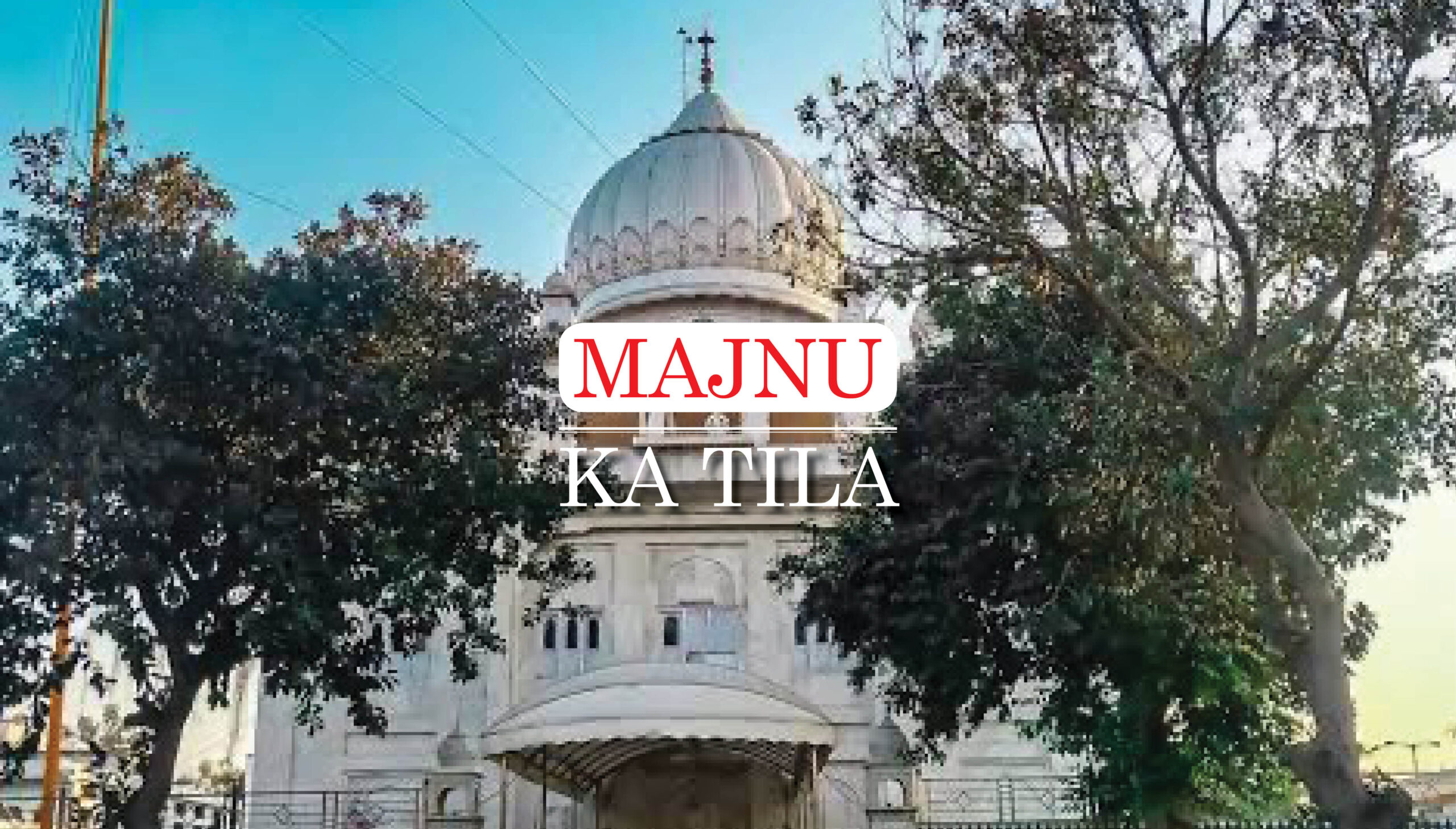
The Story of the Majnu in ‘Majnu-ka-Tilla’
Steaming momos and sizzling Korean barbecues, blueberry cheesecakes and bibimbap, laphing and thentuk—this is what MKT or Majnu-ka-Tilla is known for to most youngsters. Nestled near Delhi University’s North Campus, this culinary haven has become a beloved haunt for students and tourists alike. Yet, beneath its trendy exterior of Instagram-worthy cafés and pocket-friendly shopping lies a richer history often overlooked by its youthful patrons. Ask anyone who followed their nose to MKT why the place is called ‘Majnu ka Tilla’ and most would be lost for words. Few who savour MKT’s diverse flavours are aware of the majestic white Gurudwara Majnu Tilla Sahib gracing the Yamuna’s banks nearby or the intriguing story behind this serene Gurudwara.
The tale of Majnu-ka-Tilla starts five centuries ago. During the reign of Sikander Shah Lodhi, a Sufi saint from Iraq, Abdullah, found solace on a hillock by the banks of Yamuna. His deep meditation and solitary life earned him the nickname ‘Majnu’ – meaning ‘the crazy one’ – from the locals. Majnu led a lonely life of penitence, ferrying people across the river for free. His life took a turn when Guru Nanak, passing through Delhi, met him. Their conversation left a deep impact on Majnu, changing his understanding of faith. Guru Nanak’s teachings showed him how to balance spiritual renunciation with active engagement in life. Enlightened by this wisdom, Majnu became a disciple of the Guru.
Majnu’s humble hermitage soon grew into a beacon of Sikh faith, its legacy immortalized when Guru Nanak granted Majnu’s wish to name the place after him – thus, Majnu-ka-Tilla was born. This Sikh shrine, paradoxically named after a Muslim devotee, stands as a testament of the amalgamation of different faiths that is the story of Delhi itself.
Majnu ka Tilla’s spiritual significance flourished long after Guru Nanak’s encounter with Majnu. The sixth guru, Guru Har Gobind, sought refuge here during his tumultuous dealings with Emperor Jahangir. Decades later, his great-grandson Ram Rai, son of Guru Har Rai, also became a part of this hillock’s tale. Sent to Aurangzeb’s court in his father’s stead, Ram Rai disregarded the Guru’s strict instructions against miracle-mongering and performed miracles (karamat) at Aurangzeb’s behest, including one at Majnu Tilla, where Ram Rai confidently sat on a cloth stretched over a well, without it sinking.
This act of disobedience had far-reaching consequences. Guru Har Rai, deeply disappointed, banished Ram Rai from his sight and later appointed his younger son, Harkrishan, as the eighth Guru. This pivotal moment in Sikh history was intertwined with the story of Majnu-ka-Tilla.
For more than a century after Guru Nanak’s visit, Majnu-ka-Tilla remained a spiritual center, witnessing the ebb and flow of Sikh history and the blending of different faiths. In the 20th century, this sacred ground saw yet another cultural shift. In the wake of China’s occupation of Tibet, Tibetan refugees settled here, establishing New Aruna Nagar nearby. Today, Majnu-ka-Tilla is a unique blend of Sikh heritage, Sufi mysticism, and Tibetan resilience, all standing by the ever-flowing Yamuna River.
The Gurudwara that we see at Majnu-ka-Tilla today, originally built by Sardar Baghel Singh in 1783 CE, a part of the seven historical Gurudwaras built by him with the permission of the Mughal Emperor Shah Alam II. It has since been lovingly reconstructed by the late Baba Harbans Singh.
Weary travellers find respite in its sarai, while the langar kitchen hums with the spirit of seva, offering free meals to all who enter, while the deep well—tied to the story of Ram Rai—still stands preserved. On Baisakhi, the Gurudwara comes alive with joy as devotees gather to celebrate the Khalsa’s birthday with kirtan, prayers, and ardas.
Daily life at Majnu-ka-Tilla pulses with Granth Sahib Da Prakash, recitation of five Banis and Sukhmani Sahib and the melodious Arti kirtan. Here, on the banks of the Yamuna, the Gurudwara remains a sanctuary of faith, community, and history, a living symbol of Delhi’s rich spiritual diversity.
So, the next time you’re savouring a steaming bowl of thukpa or hunting for that perfect outfit, take a moment to explore this serene spiritual landmark. It’s a chance to connect with the area’s rich heritage and find unexpected peace amidst North Delhi’s hustle and bustle. And if you are interested in discovering more of Delhi’s hidden spiritual spots, pick up M.K. Pal’s Historical Gurudwaras of Delhi, a treasure trove of similar discoveries that invites the reader to uncover the city’s lesser-known sacred spaces.


